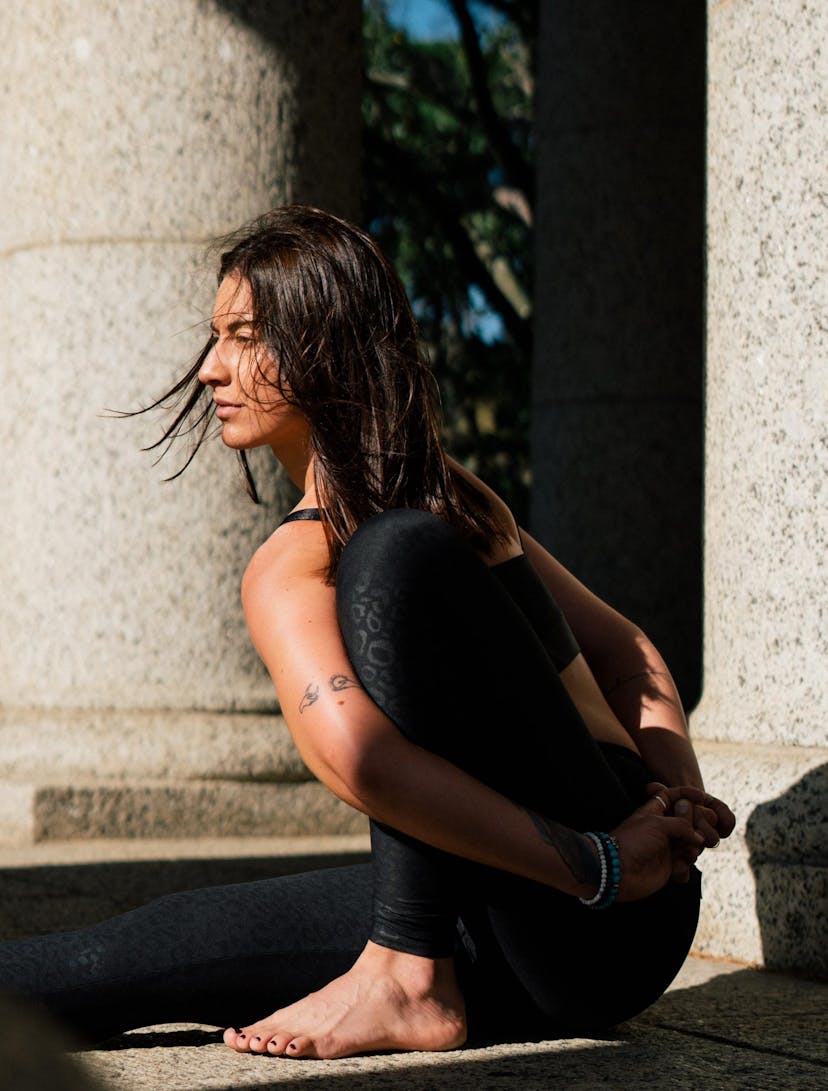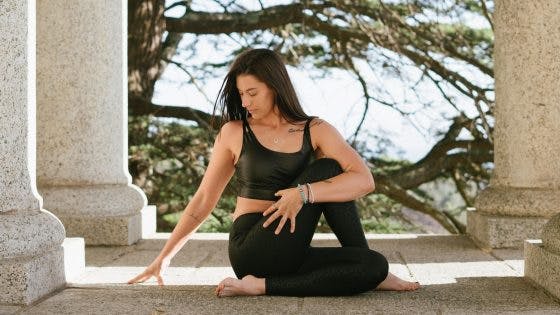Functional Movement Exercises To Prevent Seizing Up
6 minutes read
Do you find yourself prone to injuries during activities as simple as doing a grocery run where you suddenly lose balance and twist your ankle or after an intense workout where you get lower back strained muscle? If you notice that your body lacks coordination and flexibility, Functional Movement exercises might help.
Functional body exercises will help strengthen muscles and make movements safer, whether for lifting weights at the gym or lifting a laundry basket.
“Functional movement exercise ensures that you can live better. It allows your body to perform everyday movements easily, which is important, especially as we age. Regular participation in functional movement exercises ensures our bodies can perform optimally and maintain enough strength and mobility,” says Caitlin Moore, Women’s Fitness Coach.
Beauty Daily speaks to those in the know for expert advice on how to injury-proof your body by building strength holistically and help your body to function as a single unit by doing basic functional movement exercises.

What can one do to keep their muscles from losing balance and getting injured?
Luke Worthington, a personal trainer with a roster of celebrity clients, and a qualified sports scientist says: “It is possible to lose range of motion at a particular joint. Usually, a reduction in mobility can be attributed to either or both of two factors:
A change of alignment
“When it comes to our major joints of the hips and shoulders – they are ‘ball and socket joints. With this joint, the range of motion of the ball is determined by the orientation of the socket. So, if it points more one way than the other, the range of motion will be affected accordingly.”
A loss of stability at an adjacent segment
“Our body moves in a series of segments between its major joints. Moving appropriately through all these segments requires us to periodically stabilise some whilst moving others. If we lose the ability to stabilise one segment (for example, the lower back), then our ability to move through the next one (the upper back) will be limited. So, if we can’t stabilise through one segment, then we will find it at the next available, and that segment may therefore appear ‘tight’.
Both alignment and loss of stability can be attributed to a lack of strength in a particular area. Maintaining strength is, therefore, key to maintaining mobility.”
According to the experts, if we repeatedly move our body with bad posture or poor body mechanics, our joints don’t have enough space for our bones to move freely, and the muscles that should be moving our bones can’t function effectively. This leads to limitations in our range of motion and muscle imbalances, leaving us susceptible to injuries.
How will functional movement help?
“Full-body exercises are one of the most efficient ways to build and maintain strength which is the most important factor when it comes to improving or maintaining mobility,” says Worthington.
He adds: “Squat, split squat, deadlift, step up, press up are all examples of full-body closed chain exercises that will help to improve and maintain full-body strength and therefore mobility.”
While the main objective of functional movement exercises is to lower the chance of injury – it also addresses core weakness, muscle imbalances, musculoskeletal abnormalities, and poor neuromuscular control.
Why is functional movement important?
“Functional movements help muscle tension and prevent seizing by activating and mobilising the muscles. Functional movements and exercises tend to translate easily to life and how we move daily. For example, a bodyweight squat is a functional exercise which uses the movement pattern we use daily sitting down and getting up,” explains Phil Bishop, Triyoga Pilates teacher.
What is the difference between functional movement exercise and traditional workout?
“Functional movement exercise is an exercise that mimics day-to-day movements, whereas a more traditional workout could be an exercise class at the gym. Both are important, and each has its benefits. For example, an exercise class can improve cardiovascular health, whereas functional movement is great for strengthening your body and helping with everyday movement,” Moore explains.
Who can do functional movement exercises?
It is for everyone. “Functional movement exercises can be performed by anyone from complete beginners to advanced gym-goers and can be done anywhere,” says Moore.
What are the 7 functional movements?
The seven general movement patterns of the body are squat, lunge, push, pull, hinge, twist, and walk.
3 Functional Movement Exercises You Can Try
Bishop shares three functional movement exercises you can easily do at home.
1. The bodyweight squats
This exercise builds strength in your legs and glute.
– Stand with your feet hip-width apart and parallel or slightly turned out.
– Have your arms at your sides and raise them forward as you bend your hips and knees to lower down.
– Try to move your hips first and avoid moving your knees immediately forward.
– Maintain an upright spine position to avoid excessive shift into your lower back.
– If your heels lift off, place yoga blocks or books under your heels.
– Try 10 x repetitions, 3-4 times a week.
2. Push up
This exercise will activate and work the muscles in your chest, back and upper arms.
– Start on all fours, then move your hands 8-10 cm forward.
– Move your shoulders over your hands and lower your pelvis in line with your shoulders and knees.
– Hold the position and bend your elbows to lower your chest slowly halfway down to the floor; pause, then press back up to straighten your arms.
– Try 8 x repetitions, 3-4 times a week.
3. Spine curl
This exercise activates the muscles of the spine, hamstrings, and glutes.
– Lie on your back with your knees bent and your feet flat on the ground.
– Tilt your pelvis back to press your lower back onto the mat.
– Maintain the pelvic tilt and lift your pelvis up.
– Raise your straight arms up and over your head.
– Lower your spine back down to the mat.
– Return your arms to your sides.
– Try 8 x repetitions, 3-4 times a week.
If you want to elevate your mood during your workout, essential oils can help.
For those days when you feel low energy, spritz and dab this ginger and lemon-infused Eau Dynamisante, £38 in your pressure points before you begin your workout.
After your workout, Jade Shutes, Founder of The School for Aromatic Studies and Past-President of the National Association of Holistic Aromatherapy, recommends using rosemary, juniper berry and grapefruit.
“These are essential oils that would be beneficial in promoting healthy circulation and reducing any muscular aches and pains they may experience after performing functional movement exercises.
I would recommend post-exercise, although they could also be applied before exercising. One method of using them would be to create a body oil (massage oil) with a base of jojoba or other carrier oils.
1 fl. ounce of carrier oil (jojoba oil) with 7 drops of rosemary, 5 drops of juniper berry, and 7 drops of grapefruit.
An inhaler could also be beneficial to ease tension in the body post-exercise or inspire exercise before doing it. An inhaler could be: 10 drops of grapefruit, 7 drops of juniper berry, and 8 drops of rosemary, used in an inhaler,” she advises.

Or you can simply use the Tonic Treatment Oil, £43.
It has got rosemary oil which helps reduce nervous tension, boost mental activity, and encourage clarity and insight. In addition, it has geranium oil helps to detoxify the body and mint which can relieve stress and mental exhaustion. These wellness benefits are an addition to their firming and toning properties.
Plus, with every purchase of Tonic Treatment Oil, Clarins will make a donation to Fondation Arthritis to support research programs for inflammatory rheumatic diseases.
Learn more about this partnership here.
Read next: Celebrity Trainer Approved Arm Exercises
Sign up for our newsletter
We will keep you in the loop for special offers, exclusive gifts and product news.

